One of the questions I am frequently asked is where the Beautiful Gate of the Temple was located. This gate is mentioned in the New Testament (Acts 3.2,10) as the place where the lame man was begging. After he was healed by Peter and John “he went with them into the temple courts, walking and jumping, and praising God” (Acts 3.8).
The “Beautiful Gate” is not mentioned in other historical sources. Many scholars have accepted Thackeray’s comment on Josephus’ description of the Nicanor Gate, or the Corinthian Gate as he called it (War 5.201,204), that it “probably” was the gate of Acts 3.2,10. Edersheim was of the same opinion.
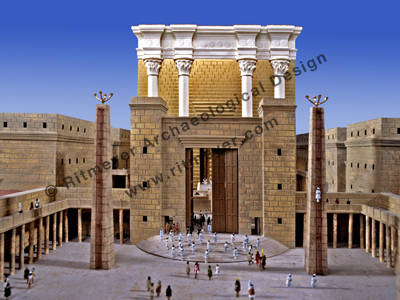
The Nicanor Gate (Middot 1.4, 2.3,6; Yoma 3.10, etc.) was certainly beautiful, but the question is, would the lame man have been allowed to enter so far into the Temple Courts? This appears not to have been the case, as once he was healed, he entered into the Temple Courts (Acts 3.8), so the Nicanor Gate could not have been the Beautiful Gate. According to Acts 3.11 the healed man and Peter and John were in Solomon’s Porch, which is to the east of the Court of the Women.
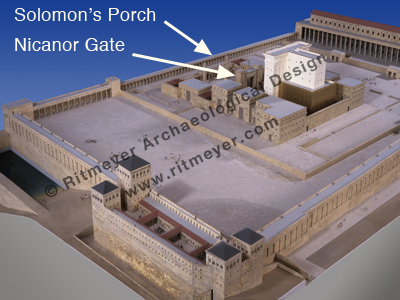
Others have suggested that the Beautiful Gate must have been one of the outer gates of the Temple Mount. Because of its proximity to Solomon’s Porch, some have suggested that the Shushan Gate in the Eastern Wall of the Temple Mount, may have been the Beautiful Gate, as it had a beautiful representation of Shushan the Palace (Middot 1.3).
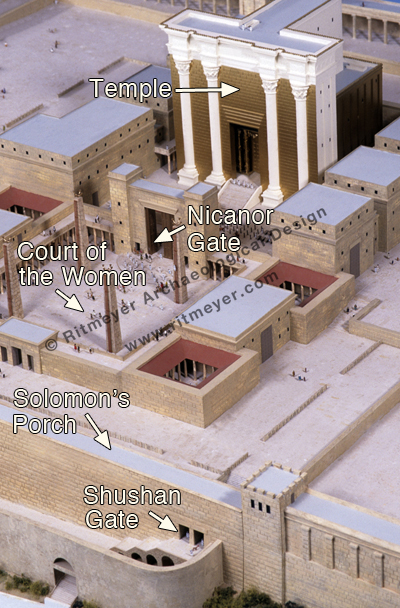
According to Mishnah Kelim 1.8, nobody with an issue of any kind was allowed into the Temple Mount. Although the lame man need not have had an issue, his infirmity may have put him in the same category. Another point to consider is the fact that he was begging. To get the best results, one would want to be where the traffic was greatest, which is another argument which would rule out the Nicanor Gate, as not many people were allowed to go through this gate. It would also rule out the Shushan Gate, which was mainly used for ceremonial purposes.
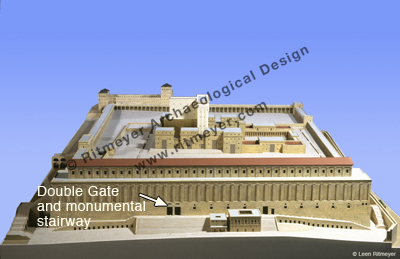
A more likely location would have been the Double Gate in the southern wall of the Temple Mount, which I have described in my book The Quest, Revealing the Temple Mount in Jerusalem, pp. 67-74. A 210 feet (64 m) wide monumental stairway led up to this gate from the lower plaza. Because of its monumental proportions, this gate was probably used by most of the pilgrims going to worship at the Temple.
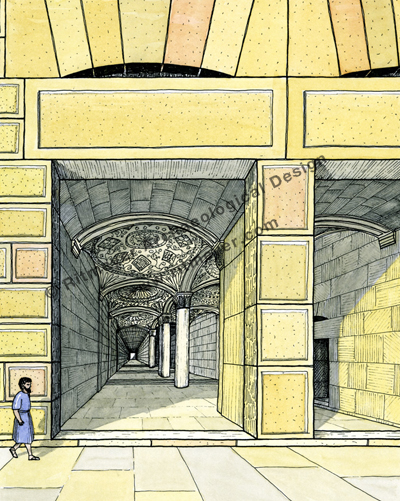
The ceiling inside the passageway has beautifully carved domes, which have survived up to today. Most of the worshipers went up to the Temple Courts through this gate, which was certainly beautiful and very effective for begging purposes, as suggested on p. 74 of the above mentioned book.
We suggest then that Peter and John healed the lame man at the Double Gate and from there he went “walking and jumping” to Solomon’s Porch.

The Southern steps and the double gate were holy ground when I stood there… indeed a beautiful place…. not just from the perspective of the architecture of the gate itself, but from an overwhelmingly holy attestation in my spirit as I stood there in complete, speechless awe.
Lynn, your attestation is an exact replication of my experience there at the Southern Steps, about 10 days before your post. Exactly my feeling as well. Thanks for posting
The research and findings of the Beautiful gate spoken of in Acts 3 is impressive. It is confirmation when an event is put into perspective when connected to an actual place.
However, this would not have been a “place” if it wasn’t for the two men carrying the man who was lame since birth. These unknown men, may have carried him every day for years. Unselfish acts like this should be practiced by us daily. They also had faith knowing that one day something beautiful would happen or they wouldn’t have carried him everyday. Beauty is in the eyes of the beholder. The Beholder is who healed the man! And that is Beautiful!
It’s got to be the Jaffa Gate.
“Jaffa” or “Yaffa” is the feminine form of a few adjectives for “beautiful” in Hebrew, Arabic and Aramaic.
Nice try! However, the Jaffa Gate didn’t exist in the time of the Apostles as it is only about 480 years old.
Thank God for blessing others to bless me. I learned a lot of new things just by reading the author’s insight. God bless
The problem is who call it ”Beautiful”? There is a possibility that that gate was call ”beautiful” by Christians (because we don’t have any historical records abut a gate with such a name) after the miracle was performed. It remains in a collective mind as a beautiful place. Logically it must be before the Solomon’s Porch. Every place become a beautiful place if it care the remembrance of God’s work and power.
It is true that a gate by that name is not mentioned in the historical sources. It is doubtful that the gate was called ‘Beautiful’ by Christians, as the followers of Jesus were not yet known by that name. That name was first given in Antioch (Acts 11:26). I still believe that the Double Gate is the best candidate for the reasons I set out in this post.
The thing that amazes me most about this story is that the location was prominent. People went through the gate regularly and they knew the crippled man who was a fixture at this gate. The leaders knew him. He had been here for years. Jesus may well have seen him there and chosen not to heal him. But when the time was right God used his infirmity to do a mighty deed. His healing gave legitimacy to the apostles and caused many to believe. I am confident God still works mighty miracles through us. Even in our infirmity.
All differences aside about the gate…my question is what is the likelihood the lame man was a Gentile ?
Highly unlikely as Peter and John mention the God of Abraham, Isaac and Jacob.